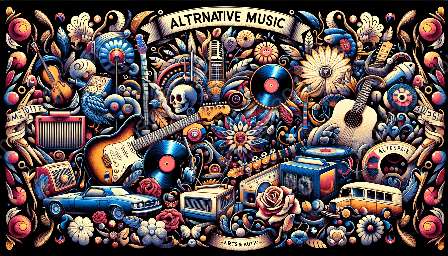When examining the world of music, two distinct categories emerge: indie music and mainstream music. Each has its unique characteristics, audience appeal, and impact on music genres. This article will delve into the key differences between indie and mainstream music and explore how they contribute to the diverse landscape of music genres.
The Unique Characteristics of Indie Music
Indie music, short for independent music, refers to music produced independently from commercial record labels or major music corporations. It is characterized by its non-conformist and DIY (do-it-yourself) approach, often focusing on artistic integrity and creative freedom.
Artists and bands in the indie music scene often prioritize authenticity, experimentation, and the cultivation of a strong connection with their audience. They may explore unconventional sounds, lyrical themes, and musical styles, embracing a sense of individuality and a rejection of mainstream trends.
Furthermore, indie music encompasses a wide range of genres, from indie rock and folk to electronic and experimental music. This diversity allows indie artists to explore and create music that may not fit into the confines of mainstream genres, leading to a rich tapestry of artistic expression.
Mainstream Music: Embracing Popular Appeal
Mainstream music, on the other hand, is characterized by its widespread commercial success and popularity. It often involves the backing of major record labels, extensive marketing campaigns, and broad audience reach through radio, streaming platforms, and other media channels.
Mainstream music is designed to appeal to a broad audience and typically aligns with prevailing musical trends and commercial viability. It may encompass various genres, including pop, hip-hop, R&B, and electronic dance music, among others, with an emphasis on creating chart-topping hits and widespread recognition.
Key Differences and Contrasting Appeal
One of the key differences between indie music and mainstream music lies in their approach to creativity and artistic expression. While indie music prioritizes artistic freedom and unconventional creativity, mainstream music often focuses on crafting commercially appealing songs and catering to a broad audience.
Indie music strives to maintain a sense of authenticity and sincerity in its artistic endeavors, with artists often pursuing their unique vision without succumbing to external pressures. In contrast, mainstream music may be shaped by industry influences, market demands, and the pursuit of commercial success, potentially leading to a more standardized and predictable musical landscape.
Another crucial distinction is the relationship between artists and their audiences. Indie musicians often cultivate a close and personal connection with their fans, engaging in intimate performances, interactive events, and direct communication through social media and independent platforms. This fosters a sense of community and shared experiences, strengthening the bond between artists and their dedicated supporters.
In contrast, mainstream artists may reach a larger but more diverse audience through mass media exposure, performing at major venues, and participating in high-profile events. While this broad reach can elevate their visibility and impact, it may also create a degree of separation between the artist and their individual listeners.
Impact on Music Genres
The influence of indie music and mainstream music extends to the broader landscape of music genres, contributing to the evolution and diversification of musical styles and movements.
Indie music's commitment to artistic experimentation and boundary-pushing creativity has led to the emergence of new and innovative subgenres, challenging traditional conventions and expanding the sonic possibilities within music. Genres such as indie pop, shoegaze, and lo-fi music have thrived within the indie music sphere, offering fresh perspectives and unique sonic landscapes.
Mainstream music, with its emphasis on commercial viability and mass appeal, has played a significant role in shaping popular music genres and driving global music trends. From chart-topping pop anthems to genre-blending hits, mainstream music has propelled certain styles and sounds to the forefront of the music industry, influencing cultural movements and defining musical eras.
The Intersection and Blurring Boundaries
It's important to note that the line between indie music and mainstream music is not always clear-cut. In recent years, the boundaries between these categories have become increasingly blurred, with crossover artists and independent labels achieving mainstream success, and mainstream artists incorporating indie sensibilities into their music.
This blend has given rise to a diverse spectrum of music that defies easy categorization, incorporating elements of indie authenticity and mainstream accessibility. As a result, listeners are exposed to a rich array of music that transcends traditional labels and genres, showcasing the dynamic interplay between artistic independence and commercial impact.
Conclusion: Celebrating Diversity in Music
The differences between indie music and mainstream music are reflective of the diverse and ever-evolving music landscape, offering contrasting approaches to creativity, audience engagement, and genre influence.
Indie music celebrates artistic integrity and individuality, fostering a sense of creative freedom that gives rise to diverse genres and boundary-pushing sounds. Meanwhile, mainstream music emphasizes commercial success and broad appeal, shaping popular genres and driving global musical trends.
Ultimately, both indie and mainstream music contribute to the rich tapestry of music genres, showcasing the resilience and creativity of artists across the musical spectrum.












































